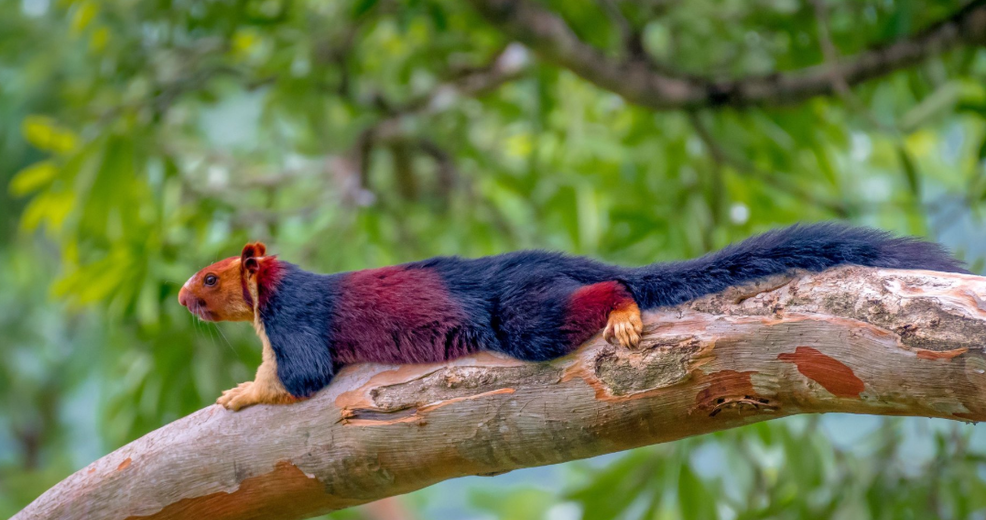
While not number 1 in size, that goes to the black giant squirrel, the Indian giant squirrel (aka Malabar giant squirrel) is a close 2nd. These technicolor rodents can be found in the Satpura hill range of Madhya Pradesh and also Maharashtra, in India. They prefer deciduous and evergreen forests. These colorful critters are listed as Least Concern by the IUCN, due to their abundant numbers.
First the Stats…
Scientific name: Ratufa indica
Weight: Up to 2.3 lbs.
Length: Up to 3 feet, including tail
Lifespan: Up to 20 years
Now on to the Facts!
1.) These pretty rodents are typically solitary critters that only come together during mating season.
2.) Malabar giant squirrels are crepuscular (active at dawn and dusk). But they can also be early morning diurnal (active during the day).
3.) They typically have between 2 – 5 nests located throughout their arboreal (live in trees) territory. 1 is used for rearing young and the others for sleeping.
4.) A group of squirrels is called a colony, a dray, or a scurry.
5.) The Indian giant squirrel feasts on fruits (their favorite being the Jack fruit), nuts, flowers, bark, eggs, and insects.
But wait, there’s more on the Indian giant squirrel!
6.) There are 4 known subspecies of Indian giant squirrels.
7.) When threatened this squirrel will freeze or flatten itself against the tree trunk, rather than fleeing.
Did you know…?
Indian giant squirrels are able to leap up to 20 feet from tree to tree!
8.) A male is called a buck, a female is called a doe, and a baby is called a pup, kit, or kitten.
9.) Females birth 1 – 3 pups several times a year.
10.) Their primary means of communication are scent and vocalizations. However, they will also twitch their tail to warn of danger.
11.) Like many other squirrels in the world, the Indian giant squirrel is friendly and approachable. They are easily befriended enough to accept food right from your hand.
12.) Fish owls and civets are but a few critters that prey on these squirrels.
Now a Short Indian Giant Squirrel Video!
Also, check out the Critter Science YouTube channel. Videos added frequently!
Want to suggest a critter for me to write about? Let me know here.



